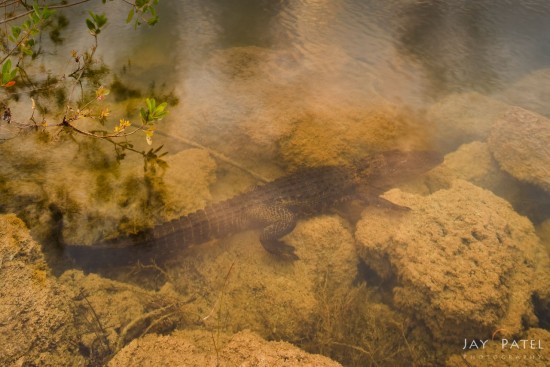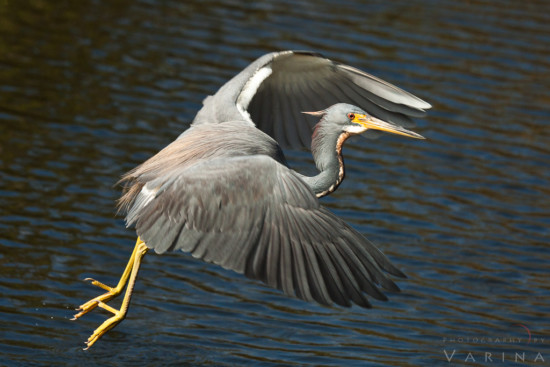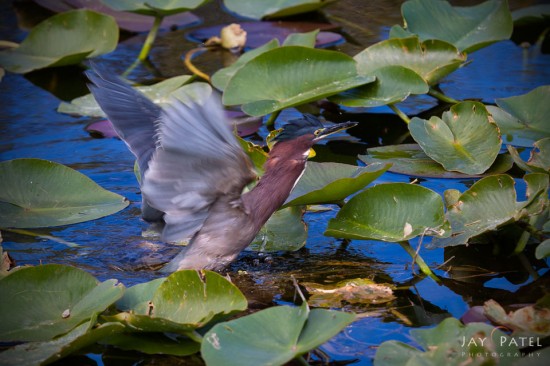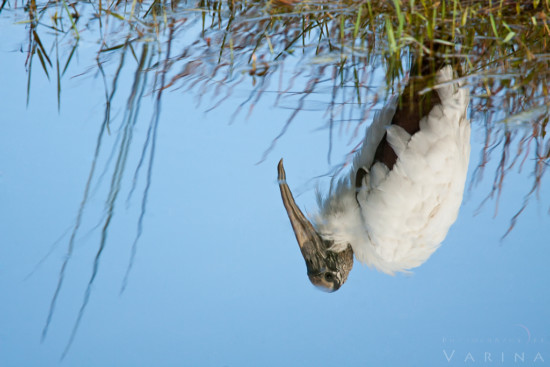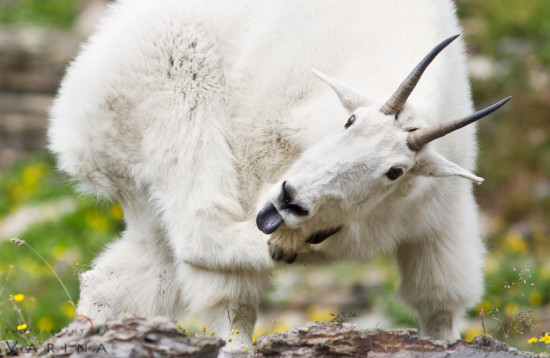Creative Wildlife Photography Composition Tips for Beginners
Ok… so you consider yourself a Landscape Photographer. This may lead you to ask: While wildlife may be part of my landscape photos, it’s not generally my main goal. Why should I, a landscape photographer, pursue wildlife photography?
There are several perfectly logical reasons for this potential shift. For one, it enhances your portfolio by adding new, unique photos and broadens your photography skillset. Added to that is the fact that, by choosing to shoot wildlife photos, you’re not confined to any specific part of time of day; wildlife can be effectively and skillfully photographed at any hour. Broadening your photography scope in this manner also allows you to explore your own creativity in new ways. And finally… sometimes it’s simply fun to try something new and different.
Now that you’ve decided to step outside your landscape skillset, it’s important to realize that there are challenges that are more unique to wildlife photography. You must be prepared to spend the necessary time to create interesting photography compositions with sharply focused subjects to make your images appealing to your viewers.
In this article, we discuss some basic photography composition tips for beginners who are stepping into the wildlife photography arena.
Wildlife as a Foreground Element
The first topic we’ll look at is the use of wildlife as a foreground element. Including a specific foreground element in your photography composition not only makes your image more interesting, it can also add a sense of place. By adding a sense of place, you’re creating a desired mood within your photo. You’re better able to bring your viewer into your image and enable that viewer to feel more readily what you were feeling when you took the photo.
I personally love using foreground elements in my photographs. By combining a strong foreground element with the use of a wide-angle lens, my viewers can feel like they’re looking out of an actual window. But I never dreamed of having an opportunity to use a live wild alligator as my foreground element! When this (hopefully) friendly alligator decided to show up and pose for me under spectacularly beautiful skies, I admit, I was more than a bit nervous. To see the full story, check out the YouTube video below:
A Unique Perspective to Your Wildlife Photography Composition
Including wildlife photography in your current portfolio can be a huge enhancement, but to use it to your fullest advantage takes the addition of a unique perspective. What exactly is a unique perspective? It’s something different – an unusual height or angle, for example – that may not be readily thought of by others. A unique perspective is simply something that makes your photography composition different and likely more interesting.
My unique perspective story includes tiny crabs on Anne’s Beach in Florida. I thoroughly loved photographing these crabs, not because they were attractive, but because they posed an unusual photography challenge for me. These tiny critters were extremely skittish – the slightest movement sent them scurrying back to their burrows. To complicate things further, their burrows were only exposed during low tide. Technique and timing were both critical factors for my success.
When unexpected challenges such as these arise, it’s vital to have an effective workflow in place. My fine-tuned workflow allowed me to catch these tiny crabs in action. The following link provides a video that demonstrates the workflow I needed to capture great images of my skittish subjects:
Eliminating Distracting Backgrounds
When photographing landscapes, we tend to view backgrounds in a way which enhances our image. But, if you are instead focusing on wildlife, you may need to shift your perspective a bit. The most interesting wildlife photographs often present more minimalistic compositions than you may be accustomed to in many landscape images.
Before we get into the why of a minimalistic composition, it’s important to understand what this sort of photography composition entails. To put it simply, a minimalistic image is one that displays extreme simplicity with as few objects as possible. When developing this sort of an image, you must give intentional thought to exactly what your image needs and what it can do without while still maintaining the message or feeling you want to convey. This is likely the most significant challenge when it comes to minimalistic wildlife photography – knowing how many surrounding elements you can remove without degrading your photo’s visual power.
Now that we’ve defined what minimalism in photography is, let’s touch on why you may want to add this technique to your photo portfolio. A minimalistic image presents the very core or essence of your image. Removing “clutter” and including only the most vital components strengthens your image and better conveys your intended message. The more complicated the photo, the more open to interpretation it may be. This isn’t always a bad thing (because art is subjective, after all) but, as the photography artist, you may want your intended message or feeling to remain intact.
Aside from conveying your intended visual message, minimalistic compositions enhance wildlife photography by drawing the viewer’s eyes to your intended subject. With a simple, dedicated photography composition, all of the focus is directed at your chosen wildlife subject. As an example, take a look at the following photograph that we captured while visiting the Florida Everglades National Park. This heron in flight, with its bright yellow beak and legs, pops out of the image because, well, it’s pretty much the only significant design element in the photo. The background of water around it provides a more subtle canvas that enhances, rather than detracts from the image as a whole.
Contrast that with the image above, also taken in the Everglades. Although the brilliant green of the water lilies and rich blue water are beautiful, these elements compete (rather than enhance) the main subject of the photo. The cluttered background hides the vivid colors of the heron.
Use Creativity to Photograph Wildlife
Obviously, there are a LOT of wildlife photographs out there. And so many of them are exceptional and impactful for one reason or another. The question here is, what will make your wildlife photos stand out… push your wildlife photography compositions to rise above the fray? How about trying your hand at some uniquely creative photography? Draw from your own creativity to produce something exceptional!
For example, have you ever tried to make your subject’s reflection the entire image? This is exactly what Varina did in the above image. As with the waterfowl in the previous section, she shot this stork image in the Everglades National Park. During our 2011 workshop, Varina was looking for something creative that would set her shot apart from other animal images. Oftentimes, with reflecting images, the rippling water causes imperfections such as the bending beak in this shot. But, likely because of the simplicity of the other elements, this imperfection gives Varina’s photo a bit more character.
Compare it to the following image (another stork photo that I shot in the Everglades). In Varina’s shot, she isolated the subject against the reflected blue sky in the water; and the upside-down bird – with all of its imperfections – adds interest and grabs your attention. My shot (the one below) presents as just another bird portrait, full of distractions. In this photo, with the background clutter, the bird’s head (both the actual subject and its reflection) get lost in the grasses behind it.
So, the next time you go out in the field, tap into your own creativity, whether it be reflections in water or some other unusual take on wildlife subjects. Maybe you’ll capture something unique that stands out from the crowd of other wildlife images.
Include Emotions or Action in Wildlife Photography
Wildlife, in and of itself, is a fascinating subject for photography adventures. But investing the time and energy to draw out even more from your subjects – such as animal “emotions” and activity can add an entirely new (and far more intriguing) level to your images. Additional tidbits such as these can keep your viewers interested, can tell a deeper story, and can help foster attachment to your photos.
Take a look at the image below of the mountain goat. The quirkiness of his tongue sticking out provides us with a different take on this incredible creature. It seems to add a bit of humor and may even give the goat a more relatable personality. THIS is a photography composition that attracts attention!
Although in a different way, the action shot of fishing cormorant above also boosts the interest level of this particular photo. The minimalistic background keeps your focus on the profile of this magnificent bird. And, even though it’s in sharp focus, there’s no doubt of the action taking place in the image.
A note about the challenge of capturing emotion and action from your wildlife subjects. Simply put, it’s difficult to accomplish. If this is your photography goal, once you’ve chosen your location and your subject, be prepared to hang in there for a while. Find the right place, watch, wait… and take lots of photos.
Action photos, specifically, are a bit more technically challenging. Here are some tips to guide you:
- Focus – When attempting wildlife action shots, I like to use predictive auto focusing (for Canon users, it’s referred to as AI Servo). In this mode, the camera automatically adjusts the focus to follow any object that is moving in a predictable pattern. This is a great tool to use for birds in flight (like the flying crane above), animals on the move, or even children playing soccer (as far as I’m concerned, photographing my kids isn’t much different than shooting wildlife photos).
- High speed shooting – If I’m photographing birds or other fast-moving creatures, I tend to use a fast shutter speed. I set my camera to take the maximum six shots per second just in case one of these beauties decides to take off. That being said, avoid just pointing the camera and firing off hundreds of shots. Remember… you have to sort through all of those shots later. Be ready to shoot… but don’t overdo it.
A Few Additional Pointers
In this article, we’ve covered a variety of topics for improving or enhancing your wildlife photography composition and images. Just to tie up some loose ends, here are a couple more miscellaneous pointers to get you progressing in the right direction.
- Light – Pay close attention to the lighting when you are out photographing wildlife. With bright light, you can use a faster shutter speed. But if the light is too harsh, you’ll end up with blown highlights combined with very dark shadows – neither of which are desirable for these types of photos.
Personally, I love shooting wildlife photos in the shade or on slightly overcast days. Clouds make excellent diffusers and that soft, even lighting is much easier to work with. Soft directional lighting (think early morning or late evening) is also really beautiful. When my goal is to capture stunning wildlife images, I focus on showing the textures in the fur, the light reflected in the animal’s eyes, an interesting pose, and anything else that will make my wildlife photos stand out. - Safety – Last but certainly not least is safety – both yours and the wildlife you’re shooting. Remember, this is their turf where you are just a visitor. Avoid being intrusive by allowing them their space. Never endanger the wildlife or yourself just for the sake of a good shot.
When it comes right down to it, wildlife photography is really about being willing to wait. It’s highly unlikely that you’ll walk up and immediately capture that fantastic shot you were hoping for. Do your research – find out where the animals hang out, what time of year they are most likely going to be present, and what time of day they are the most active and engaging.
Spend the time and find your own personal style for your wildlife photography compositions. For animal portraits, I like to use a narrow depth of field to help blur out the background. No matter the style you decide upon, make sure you keep that eye nice and sharp, no matter what. Watch for interesting poses, pleasing angles, and action shots. Most of all? Just have fun with it. Animals are extremely entertaining and unpredictable subjects… you never know what they’re going to do, so relax and be ready for that exceptional, stand-out wildlife shot.



